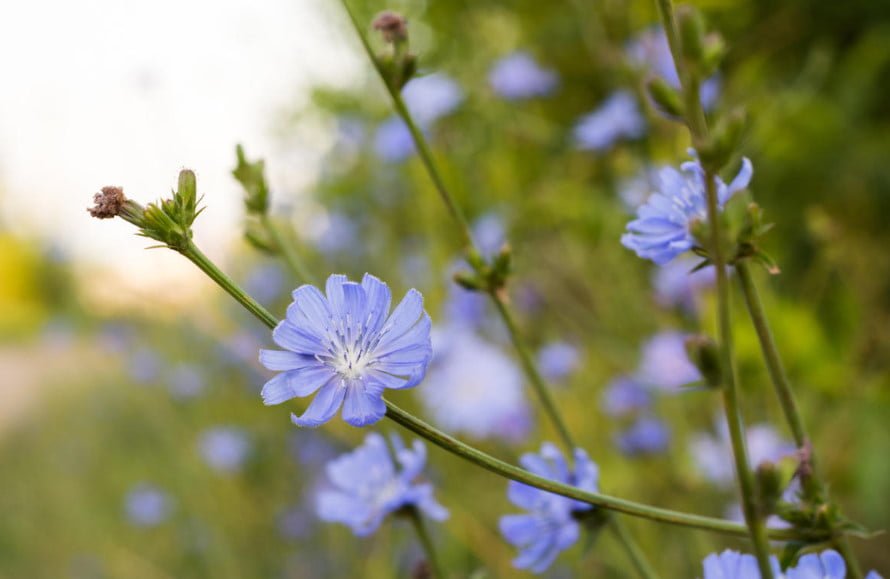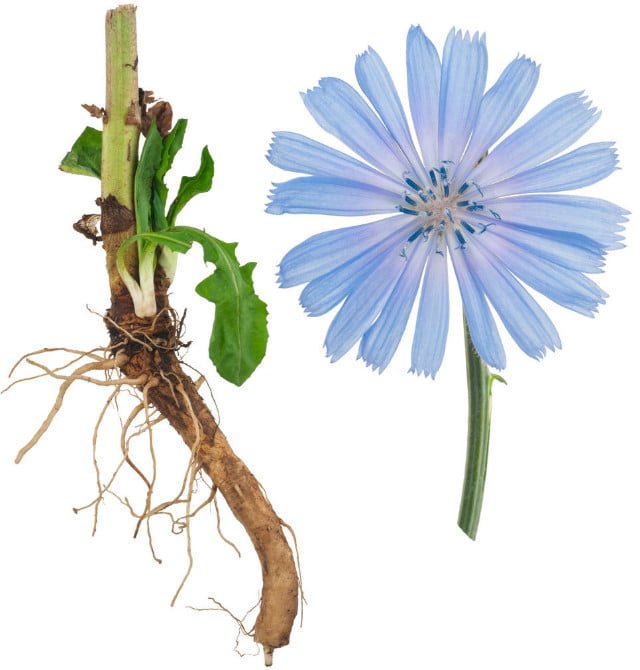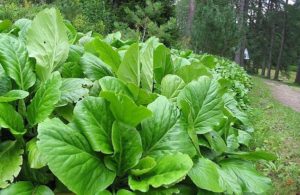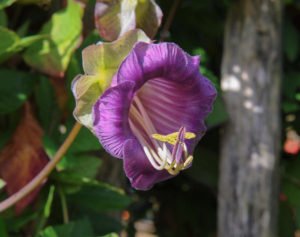
Chicory vulgaris (Cichorium intybus) is a perennial rhizomatous plant belonging to the family of Asteraceae or Compound flowers. It is widespread and grows as a weed on roadsides and on urban wastelands, meadows and pastures. However, there are several good reasons not only to pay attention to it, but also to plant it in your pharmacy garden.
The first reason is beauty
Numerous blue flowers, abundantly decorating tall (up to 1.5 m/4.9 ft or more) stems in June and July, will become a gentle and expressive accent of summer flower beds.

If you want to grow chicory not only for the benefit, but also for beauty, choose a place in the background of a decorative flowerbed or a mixborder, or place it in the center if you want a two-way view of the flowerbed. But keep in mind: during seed propagation, this plant is not blamed in the first year, since only a rosette of basal leaves is formed on it.
When choosing a companion for chicory, think about how you are going to use it. If you plan to dig up roots, do not combine this plant with perennials, it is better to plant next to annual flowers or spicy, medicinal herbs.
The second reason — the taste
Chicory rhizomes have long been used as a substitute for coffee. It is believed that the history of its use began in the second half of the XVIII century, when a Thuringian gardener “invented” this surrogate. Chicory creates a good illusion of a popular drink (even a similar taste), but it does not contain caffeine, which allows you to drink such “coffee” even for those who suffer from cardiovascular diseases. Of course, you can buy ground chicory or instant paste. But why not grow your own raw materials?

To get a coffee drink, dry pieces of roots are fried (usually in the oven), and then crushed to the size of coffee beans and brewed. When frying, the natural polysaccharides inulin and fructose contained in the roots partially caramelize – subsequently this will affect the color of the drink, giving it the appearance of natural coffee; gives the aroma obtained by heating the aldehyde sugars of hydroxymethylfurfural. This substance, by the way, has an ambiguous “reputation” — in various sources you can find information about its high toxicity and harm to the body. However, it should be borne in mind that oxymethylfurfural is found in many foods, so it is unlikely that such “horror stories” should be taken to heart.
Note also that the degree of roasting of the roots affects the taste of the drink: if the raw material has acquired a dark brown color, the “coffee” from it will be noticeably bitter.
The third reason-the benefits
Chicory is a medicinal plant that is used to improve digestion; has an anti-inflammatory, soothing, choleretic, diuretic, restorative effect; promotes the regulation of metabolism.

The medicinal raw material is a whole plant: the grass is harvested during flowering, cutting strong stems with scissors, and the roots are dug out in autumn or early spring (when the root leaves begin to grow).
Chicory roots are used to prepare decoctions and infusions used in the treatment of diseases of the liver and gallbladder, gastrointestinal tract, as well as obesity, atherosclerosis, mineral metabolism disorders, joint diseases, mild diabetes, increased nervous excitability, general weakness of the body.
Chicory herb is used in the form of decoctions and infusions for constipation and digestive disorders, edema of cardiac origin; externally – in the form of lotions or baths – in the treatment of eczema, purulent wounds, persistent furunculosis.
How to grow chicory
For sowing, you can use both purchased seeds and collected independently from wild plants. However, it is worth considering that seeds of lettuce varieties of chicory are often found on sale, surpassing wild-growing ones in taste, but inferior in medicinal properties.
Chicory root is taper, thickened, fleshy. For normal development, it requires light fertile soil with a neutral reaction; the plant feels best in a Sunny area. Chicory is sown in early spring in furrows to a depth of 2.5 cm (1 in), leaving 45 to 60 cm (1.3-2 ft) between the furrows. Seeds do not require additional processing and usually germinate after 7-10 days. The formation of large roots is facilitated by timely (in the phase of the third-fourth leaf) thinning; no more than 15 plants are left per 1 meter row.

Chicory is unpretentious, does not require special care, but if you want to get a high yield of medicinal raw materials, do not neglect weeding, periodic loosening of the soil, watering in dry weather. When growing chicory as a perennial crop, keep in mind that mice willingly eat it, so you should protect the plantings from pests.
In the first year, the plant does not bloom, forming only a rosette of leaves, but the roots can be harvested in autumn. Raw materials are washed with cold water, cut and dried; it is best to use an oven without hot heating, but you can use a conventional oven or a vegetable dryer.

Of course, you don’t have to worry: chicory is not a novelty, it is found everywhere. But often the place of its natural growth can hardly be called environmentally friendly, so it is difficult to harvest wild chicory as a medicinal raw material. And this is probably another reason to grow it in the garden — here you will certainly be sure that it will benefit you.




Leave a Reply